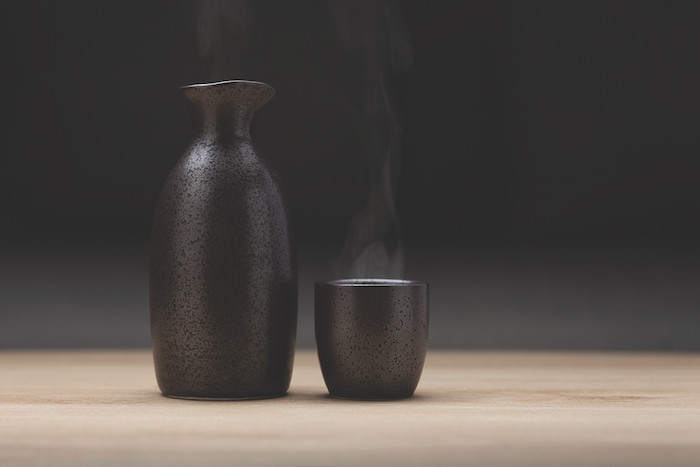
Co-owner of London sake bar Moto, Erika Haigh offers her guide to the various styles of Japan’s national drink and explains why it’s a perfect food pairing.
I always thought sake was the stuff you drank hot out of tiny ceramic cups in Japanese restaurants. Definitely not this chilled, floral delicacy you have here.”
You won’t believe how many times I’ve heard such a remark from a customer at my sake bar, Moto. And it doesn’t end there. There are some other misconceptions, such as sake can only be enjoyed with Japanese food. Or that sake is a distilled spirit. Or that sake gives you the worst hangovers…
In part, these misconceptions are down to a lack of information, so let’s address that. Here’s my introduction to sake.
What is sake?
Sake is a fermented beverage made from rice with an average abv of around 15%. It is Japan’s national drink and has been enjoyed for around 2,000 years. Given how Japan’s landscape is so varied – with mountains and coastal microclimates – each brand of sake differs too, in profile and the way it is served.
For example, sake can be enjoyed at a wide range of temperatures. Your decision will come down to the characteristics of the sake at hand, your personal preference or the setting in which you have the sake. When it comes to food and sake pairings, the possibilities are limitless. Compared to sake, wines are higher in acidity and red wine has bitter tannins. Beers have bitter flavours from hops. Spirits are high in alcohol. On the other hand, sake is low in acidity and slightly sweet, with little or no bitterness or astringency. This is why sake can accompany all types of dishes and cuisines.
A great example I often like to give is cheese. As much as the western world continues to gravitate towards wine as its rightful pairing, the tart-tasting tartaric and citric acids found in wine only wash away all that delicious umami found in cheese. Sake, on the other hand, has a lot more amino acids (seven times more than wine), which are the same compounds that create the umami flavour in cheese. Sake lends itself to cheese as it helps the palate retain the flavours. Sake and cheese truly are a match made in heaven and I highly suggest you give this pairing a try.
When choosing your sake, you may have noticed that there are dozens of types of premium versions on the market (including speciality styles, such as sparkling, dessert, and aged) as well as table sake. For today, let’s focus on premium sake, as most of what is imported to the UK sits within the premium categories.
These different styles are determined by two decisions made during the sake brewing process: 1) How much the grains of rice have been polished, or milled down, and; 2) The addition of distilled alcohol.
These categories include:
Ginjo sake is made with rice grains that are polished down to at least 60% of their original size. Very pure and delicate flavours are produced through the use of special techniques and yeast strains, with the most common being fruity flavours of green apple and fresh banana. Sakes that fall into the ginjo category tend to be lighter in body and lower in acidity.
Daiginjo is serious stuff, made with rice polished down to 50% of its original size or more. Great precision, time and care are required throughout the sake brewing process. Think of daiginjo as a natural progression from the ginjo – extremely elegant, fresh, and aromatic, usually best enjoyed chilled.
Honjozo – by contrast to ginjo or daiginjo categories – rice grains are polished more coarsely, with only 70% being the required rice polishing ratio. It is a versatile style that can be served at a variety of temperatures, from cold to hot. When compared to ginjo or daiginjo, honjozo sakes can be less aromatic and more of a light and crisp beverage.
Junmai sake does not require a fixed minimum rice polishing ratio. Yet what is unique is that high-strength distilled alcohol, which is added to all other categories of sake, is not added here. It tends to be a more full-bodied, rich and complex style with higher acidity and umami levels and can usually be enjoyed at a wide variety of temperatures. Junmai can appear on its own or as junmai ginjo or junmai daiginjo, signifying the use of highly polished rice without the addition of distilled alcohol.
By now, I hope you have come to realise that sake is a dynamic and versatile category that deserves far more attention in the UK food and beverage scene – whether that be to imbibe on its own, or to further elevate a food and drinks pairing menu, or as an ingredient to add complexity in a cocktail. Once you become aware of sake’s infinite possibilities, I can guarantee you’ll be stuck in this rabbit hole for good.


